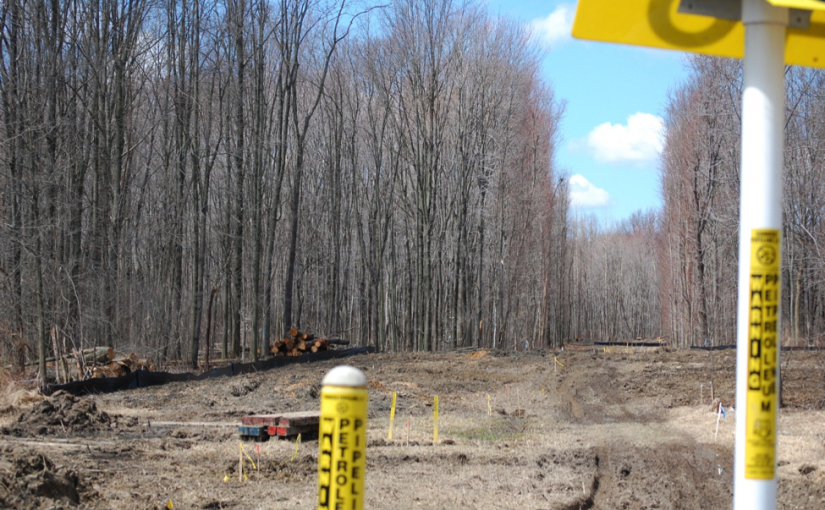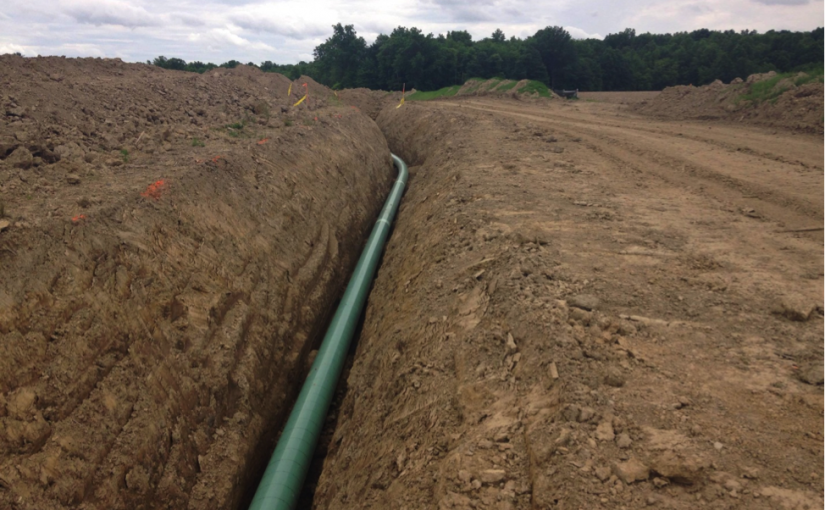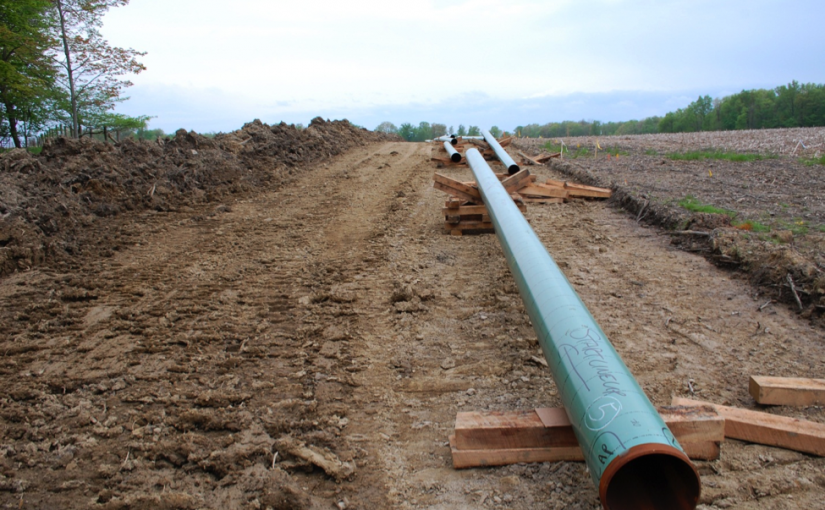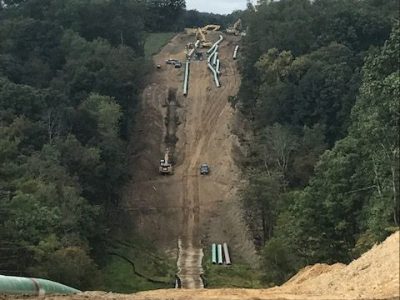Pipeline Installation Process
Execution and Surveying
After pipeline paperwork is signed, the pipeline company will first survey your property. Oftentimes the pipeline company uses an ‘estimated linear feet’ (length of the Right-of-Way [“ROW”] on your property) within their documents because they don’t want to spend money on a survey until they know that you are committed to them. The survey will tell them exactly how long the ROW is on your property. It will also tell you exactly what you will be paid. During the survey the pipeline company should flag the full extent of the ROW. This will include any temporary workspace (they do not typically flag the temporary workspace separately).
Clearing the Right of Way
The next step is clearing the ROW if necessary. Clearing can mean removing crops or timber. If a ROW is just in grass they will not have to clear it. This photo shows a heavily timbered property. You can see a few of the timber piles alongside the ROW. Depending on how the contract is negotiated, you may be entitled to keep the leftover timber, or it may become the property of the pipeline company. The timber is always stacked along the side of the ROW. This ROW in particular is only fifty feet wide. The company got permission to clear an extra twenty-five feet to install a second line within the ROW. The picture, therefore, depicts seventy-five feet of cleared ROW. Although seventy-five feet may not sound like much, you can see, below, the impact it makes on the property. Note that the timber piles here are only for twenty-five feet and not seventy-five feet. The timber piles would be approximately three times larger had they cleared this ROW in one step.

A seventy five foot pipeline ROW – still under construction
Topsoil Removal
Next, the pipeline company will remove the top soil. Remember that disturbed soil takes up a lot more room than compacted soil. The following picture shows 12” of top soil after it was removed. The 12” of compacted soil turned into roughly 36”. Your top soil should be kept separately from your subsoil. These soil piles are called ‘spoil piles,’ and they will be replaced after installation. The spoil piles will run the entire length of your property.
Pipeline construction showing topsoil piled on the left.
Pipe Positioning and Installation
After the topsoil is removed, the pipeline will be stretched out for the length of the ROW. They are kept elevated on top of the sub soil with boards. The pipeline will be welded right on top of these wooden boards. The elevation allows the welder to access the full 360 degrees of the pipeline. Next, they will dig the trench. Again, the subsoil will be kept separately from the top soil. See the below picture where topsoil is on the left and subsoil is on the right.

A pipeline trench. Topsoil is piled on the left ; subsurface soil on the right.
After the trench is dug, a layer of gravel is installed. This gravel keeps the pipeline level. Then welders weld the pipeline. The pipeline is then lowered into the ditch on top of the gravel base. The pipeline then goes through a number of safety checks. These safety checks are different depending on the type of line (what it’s carrying, the pressure within, etc.) and the wording of your ROW paperwork. After the safety checks are met, the subsoil is replaced, the topsoil is replaced and your property is reclaimed according to your ROW paperwork. This may involve reseeding grass, replanting crops, spreading mulch across the ROW from timber that was removed, or a number of other things.
Conclusions
It is critically important to have an attorney draft a detailed construction and reclamation plan for you in your ROW paperwork. State, local or federal laws do not always set the bar high enough for safety and reclamation. You want an attorney to address things like:
• The number of weld joints that must be x-rayed (to check for leaks).
• The amount of topsoil and subsoil that must be removed.
• The processed utilized for any rocks encountered.
• What happens to any felled timber brush and stumps after clearing the ROW.
• Cathodic protection implementation.
• Reclamation plan including type of seed and any fertilizer required.
• Emergency protocol.



